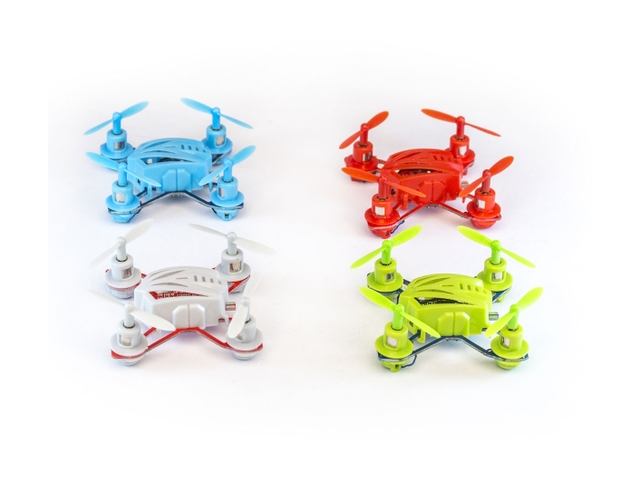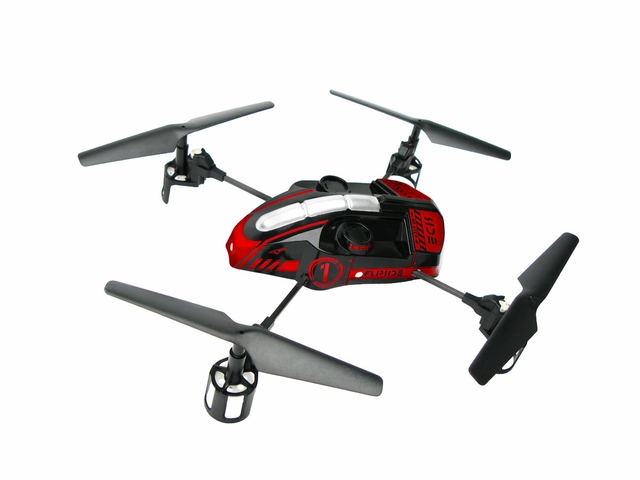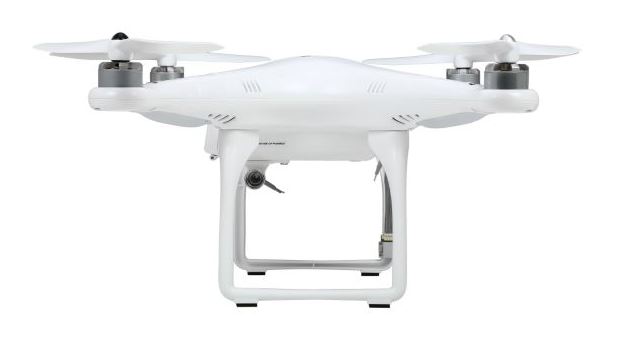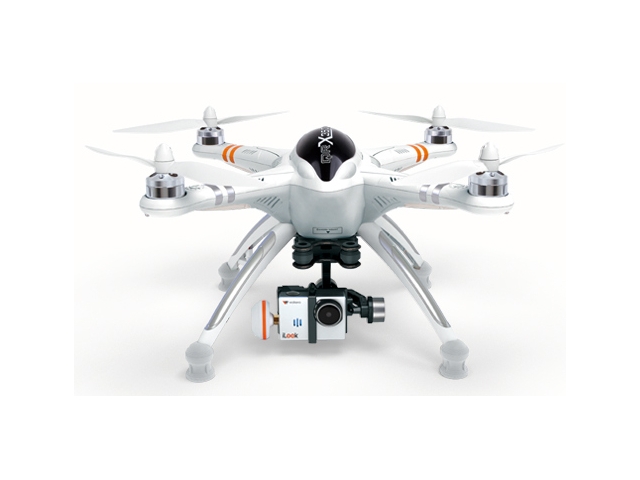
Drones are one of the most controversial topics in today’s consumer electronics industry – mostly because they are misunderstood. While it’s true drones have been used to commit heinous acts like invading someone’s privacy or smuggling drugs into prison, they are also responsible for doing a lot of good in the world.
Drones are being used on a daily basis to help journalists gather news they otherwise couldn’t obtain, deliver medicine to people who can’t leave their homes, or for just plain old fun. And with major corporations like Facebook and Google investing millions of dollars into drone technology, it only confirms one thing: Drones are more than just toys; they’re whatever you want them to be.
With so many different types of drones available today and their meteoric rise in popularity, you’ll probably be purchasing one for somebody on your Christmas list this year. But in case you’re confused about which one to buy or what a drone even is, this guide is for you.
What is a Drone and How Does it Work?
A drone is an unmanned aerial vehicle that can either fly autonomously (GPS) or remotely (radio-controlled). There are many different types of drones, but the most popular ones for consumers are radio-controlled and have more than two rotors – most commonly referred to as multirotors.
Drones can have any amount of rotors, but the three most popular versions for consumers are:
Quadcopters: A multirotor drone that is lifted and propelled by four rotors.
Hexacopters: A multirotor drone that is lifted and propelled by six rotors.
Octocopters: A multirotor drone that is lifted and propelled by eight rotors.
Multirotor drones are preferred over single or double rotor drones because they use fixed-pitch blades as opposed to variable-pitch blades. This allows pilots to control the motion of the drone by configuring the speed of each rotor to change the thrust and torque produced by each.
For example: If you want the drone to roll left, you would speed up the motors on the right side of the frame and slow down the two on the left. If you want the drone to go forward, you would speed up/slow down the rotors that lean in the direction of desired travel. If you want to go higher, you would speed up all the rotors at the same time.
Multirotors are perfect for beginning and experienced pilots for two reasons:
- They have simpler rotor mechanics
- They are easier for flight control
Best Drones for Beginning Pilots
The best types of drones for beginners are those equipped with radio transmitters. These drones are usually small, affordable, and only require standard batteries. They also perform the same functions as larger drones and are good for practicing how to control the throttle, yaw, pitch, and roll before moving on to more expensive options.
Flipside EZ Fly $49.99
- 2.4Ghz Radio 4-Channel Operation
- Four Operation Modes (Beginner-Expert)
- Indoor/Outdoor Capable Flight
- Inverted Stunt Function
- Futuristic Graphic Style Canopy
- Full Line of Spare Parts
Flipside EZ Fly Nano $49.99
The Flipside EZ Fly Nano is exactly like the Flipside EZ – only smaller!
Hubsan X4 H107C $59.99
- Includes Camera Recording Module
- Latest 6-Axis Flight Control System with Adjustable Gyro Sensitivity
- 4-Channel Operation Permits Super Stable Flight
- 4-Way Flip (Left, Right, Forward, Backward)
- Accepts MicroSD Card (Excluded)
Best Drones for Experienced Pilots
There are many reasons to upgrade to a bigger drone, but most pilots do so when they want a bigger camera or an increased flight time. Bigger drones may be more expensive and require larger batteries, but they are worth the money for pilots who are interested in aerial photography, racing, or investigating remote spaces.
DJI Phantom FC40 $499.99
- 5.8G Remote Control and Receiver
- Featherweight 2.4G Wi-Fi Camera With 720p/30fps HD Video
- User-Friendly Smartphone App for First Person View (FPV)
- 10x Digital Zoom Function While in FPV
- Low-Latency Live Preview
- Remote Control Mobile Phone Capture
- In-Phone Album Synchronization
Walkera QRX350 Pro $839.99
- GPS Altitude Hold System
- One Key and Failsafe Return-to-Home Functions
- DEVO F7 FPV Transmitter/Receiver
- 5.8G Antenna
- Includes iLOOK HD Camera (720p 30 fps Video)
- Includes G-2D 2 Axis Brushless Gimbal (Compatible with iLOOK and GoPro Models)
- High Capacity 11.1V 5200mAh LiPO Battery and Brushless Motors
Which Drone Should You Buy?
Ultimately, the type of drone you buy will depend on price and what you want to use it for. Whether it’s for beginning or experienced pilots is beside the point. If you just want a drone to fly in your backyard and have some fun, a small drone is best. But if you want something that will capture HD video or even make deliveries; a larger drone is what you’ll need.
And if you’re feeling hesitant about buying a drone as a Christmas present, here are 10 reasons that explain why they’re so popular.
1. Drones are Moving Beyond Warzones
The use of drones in military conflicts remains controversial. But drones have consumer uses too, and a growing number of companies are pouring money into making them mainstream in the years ahead. One of those firms, 3D Robotics, raised $30M of funding, while the Federal Aviation Administration expects 30,000 drones to be flying over the US alone in 20 years’ time.
2. Consumer Drones are Getting Better
Perhaps the best-known consumer drone is Parrot’s AR.Drone, which is in its second-generation model. It’s a “quadricopter” controlled from your smartphone or tablet, which is capable of zipping around for 36 minutes at a time, recording and streaming video. It also has an add-on Flight Recorder accessory that uses GPS to navigate a pre-set route and plot it on a map.
3. Drones are Rapidly Becoming the Standard for First Person View (FPV) Photography
Besides UAV, another abbreviation you’ll often see used when talking about consumer drones is FPV, for First Person View. That refers to drones capable of recording video as they go and streaming it so the owner can steer as if they were sitting in the drone. Some, like the AR.Drone 2.0, offer FPV through their built-in cameras. Others, like the Lehmann LA100, use cameras like the GoPro Hero3+ and there’s plenty of sites explaining how keener owners can build their own FPV drones too.
4. Drones Draw Inspiration From the Military
Having said that consumer drones are moving away from the military world, it’s fair to say that a number of them take their design inspiration from the drones being used in warzones. The 4 Channel Predator/Reaper Style UAV Drone RC Plane is a miniature version of the US Air Force’s RQ-1 Predator UAV, for example, encouraging buyers to “fly your own covert missions”.
5. Drones are Available at Many Price Points
There’s a wide range of consumer drones available. Sub-$200 devices aren’t a huge leap from traditional remote-controlled helicopters, with the real action happening between $300 and $800 – although prices are likely to come down over the next year or two. All the drones featured in this blog post cost less than $1000, but prices go as high as $30,000 for the Aibotix Aibot X6 UAV, which is more focused on commercial use – for example, by filmmakers.
6. There are Apps for Drones
One of the key features of consumer drones is their ability to be controlled by smartphone and tablet apps, although how open they are to developers varies. The AR.Drone led the way in terms of getting apps beyond pure controllers. AR.Race 2 runs on iPhones and iPads, and operates as a racing game for the drone, with players taking turns to complete a course as quickly as possible. Meanwhile, AR.Rescue 2 is an augmented reality game with virtual aliens that need rescuing. Expect to see more of this as drones get more popular.
7. Commercial Uses for Drones is Growing
As more drones get into the hands of individuals, they’ll start using them for work. Germany has a Dönercopter delivering doner kebabs. California has a Burrito Bomber delivering burritos. Sydney firm Flirtey runs a flying book-delivery service. Journalists and activists have also used drones: US journalist Tim Pool customized a drone – the Occucopter – and flew it above the Occupy Wall Street protests to stream footage to the outside world, for example.
8. Drones Aren’t Just About Air
They are swimming and walking too. Portuguese company Azorean raised $127,000 on Kickstarter to make Ziphius, which it described as “the first app-controlled aquatic drone that plays augmented reality games and shows autonomous behaviors”. Meanwhile, the Walkera QR Infra X Smart Drone walks around the house, has sensors to avoid collisions, and can even climb the stairs.
9. Flying Drones is Not a Crime
There’s been a lot of debate – more so in the US – about the legality of non-military drones, more in connection with commercial uses and the potential for spying on people. Legal bans on commercial drones left the way clear for consumer models to come out – some of which can be used for commercial purposes. Expect to see some high-profile publicity too if anyone misuses their drone: people buzzing their neighbors’ barbecues or spying on spouses or smacking someone in the face with a falling quadricopter could all spark lawsuits.
10. Drones are Marching Into the Mainstream
Consumer drones are a growing niche. There’s even already a beginner’s guide-style e-book: Getting Started with Hobby Quadcopters and Drones, to demystify the area. They also fit into wider trends, from GoPro and other wearable cameras to Lego Mindstorms robotics that will make them seem less strange in time.
What type of drone do you think is best? Will you be buying one this holiday season? What will you be using your drone for? Let us know in the comments below!






